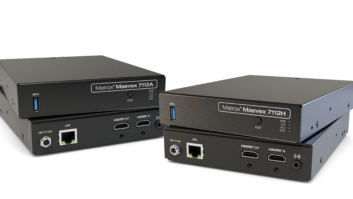Editor’s Note: Weinstock Media Analysis, a research and analysis firm, led by Neal Weinstock, has completed a survey on issues critical to the custom installation industry. This survey, the foremost initiative to utilize an independent agency, amassed statistics from large and small custom firms across the country. This “barometric reading” helps identify important new trends and ways to stay on track for the future.
Thanks to the generosity of our survey’s participants, we gathered a very representative sample of the industry. After throwing out unqualified and unrepresentative responses, we’ve got 88 detailed responses from all aspects and geographical segments of the North American residential A/V systems integration business. Because, to our knowledge, no one has completed such a detailed survey before, extending the results to model the full industry is still a bit parlous. We think, however, that the results here demonstrate a good beginning at helping us all make our industry more secure, bankable and prosperous. Why more bankable? Because among our most interesting results were these:
o Respondents saw average revenue growth of 37.8 percent in 2002 and expect growth of 42.7 percent in 2003.
o Overall revenue per employee in 2003 is a solid $181,038.
o Even more impressive, in the $1-2 million company-revenue range-exactly the range where growing companies begin to seek serious financing-revenue per employee averages $377,549. That’s very bankable indeed.
o Respondents say their average profit margin on a job is 28.4 percent.
o Average revenue overall was a solid $2.585 million in 2002, expected to grow to $2.976 million in 2003. This is after we threw out responses from a couple of the industry behemoths, so this and all of the above data are very representative of the typical systems integrator/installer.
In other words, this is a profitable and sizeable industry, with lots of room for growth and for new participants. Just what investors or lenders want to hear!
There were some data here that point to a need for more research. For example:
o 68.2 percent said that they face strong local competition; 31.8 percent said they don’t. This is either because they are so ahead of the pack in a strong local market, or is it the weaker demand areas in which competition is weaker, too? Or are respondents deluding themselves?
o Roughly half of respondents said that they consult regularly with electrical contractors, architects and engineers. Maybe the lack of local competition in some areas is due to lots of local cooperation.
Combine these results with data showing that many of the respondents with the highest revenue per employee and profits are very small shops that are more consultants than resellers, and we can see an emerging profile of a large and successful side of the industry. These are small companies defined by very high expertise and reputations, which don’t want to reduce their profitability by dealing in low-margin equipment. Conversely, somebody that’s much more efficient at it is selling that hardware; are they able to realize the benefits of installing it, or do most of those profits go to these small consulting companies?
We all know that the industry supports many companies meeting the above descriptions. Now, however, we are beginning to quantify not only how many of each kind of company there are, but just how successful they are and how much room there is for more of each kind of company.
The survey gave us some pretty good information, too, about what kinds of products were selling. Most respondents are relying on systems including a big flat-screen or projection TV, surround sound system, analog coaxial wiring, structured wiring and, increasingly, HDTV. Big installation business is done in PCs and satellite TV, even though very little business is done in actually selling those devices. Other areas where respondents are largely installing systems that they didn’t sell include all kinds of LANs and telephone systems. The biggest expectations for new products in the near future center on media-center PCs, LANs, voice over LAN and especially (at 30.6 percent) OLED flat panel TVs. Those are pretty big-ticket items!
About two-thirds of the average respondent’s business involves residential systems, with roughly the other third being commercial systems. The vast majority of respondents (72.9 percent), however, install only residential systems. Another way of looking at that number is that the remaining 27.1 percent of respondents, those who do commercial systems installations, too, tend to be the industry’s larger firms. They are responsible for most of the big installs in residential as well as commercial, and they garner most of the industry’s revenue and profitability.
This should not be unexpected, but it does point to some need for further research… perhaps especially for those who’d like to take this survey to the bank. Does our research begin to suggest that only this quarter of the industry is really successful and bankable, and that they will inevitably dominate both residential and commercial installations? Or are the residential-only dealers here often at an earlier stage of their businesses, and able to build themselves into reputations that will allow greater choice of projects and greater profits? We can’t yet say, but we’ll be working on it.
Our understanding of the industry can only grow as we follow up with more of these survey efforts. Thanks again to those who helped make it possible.







